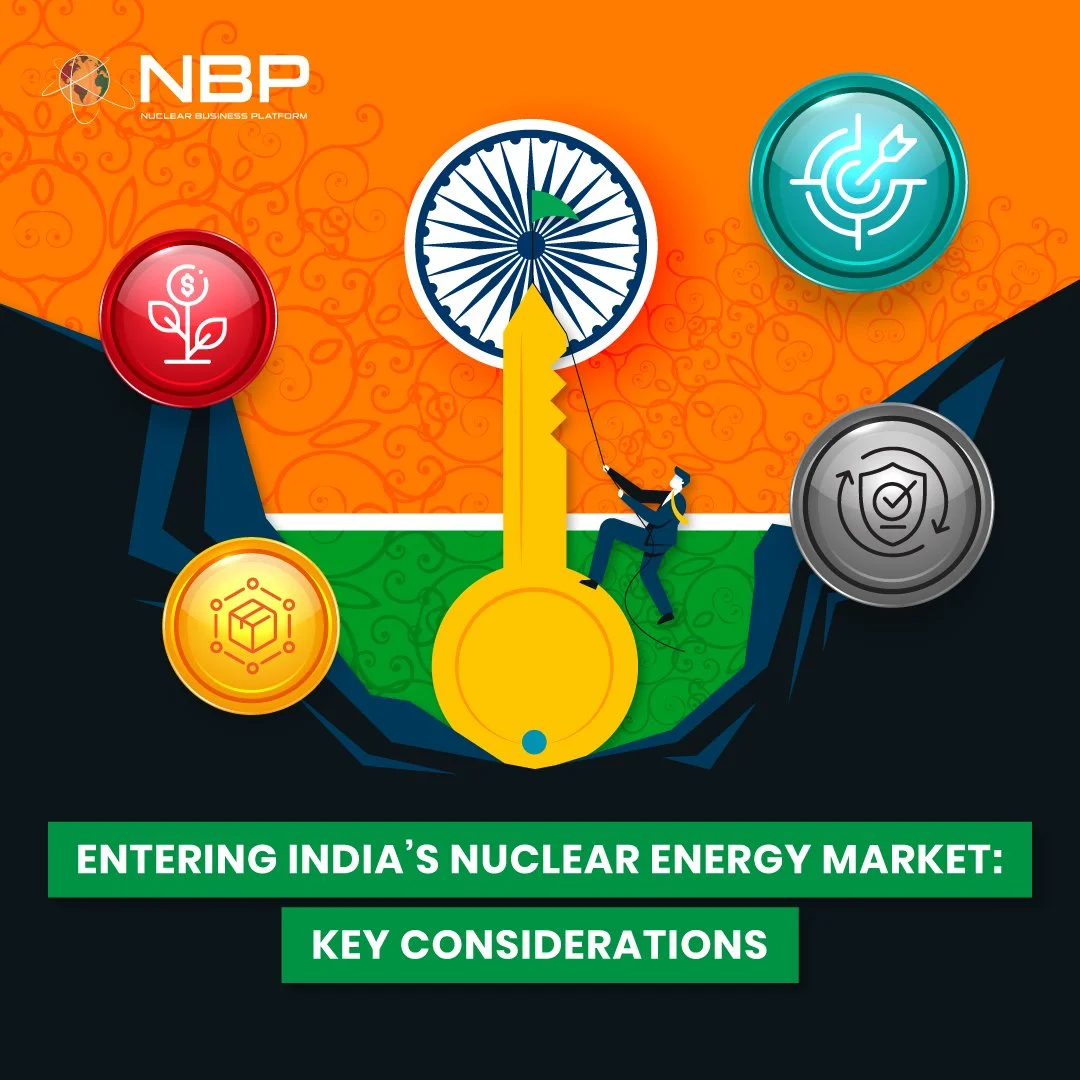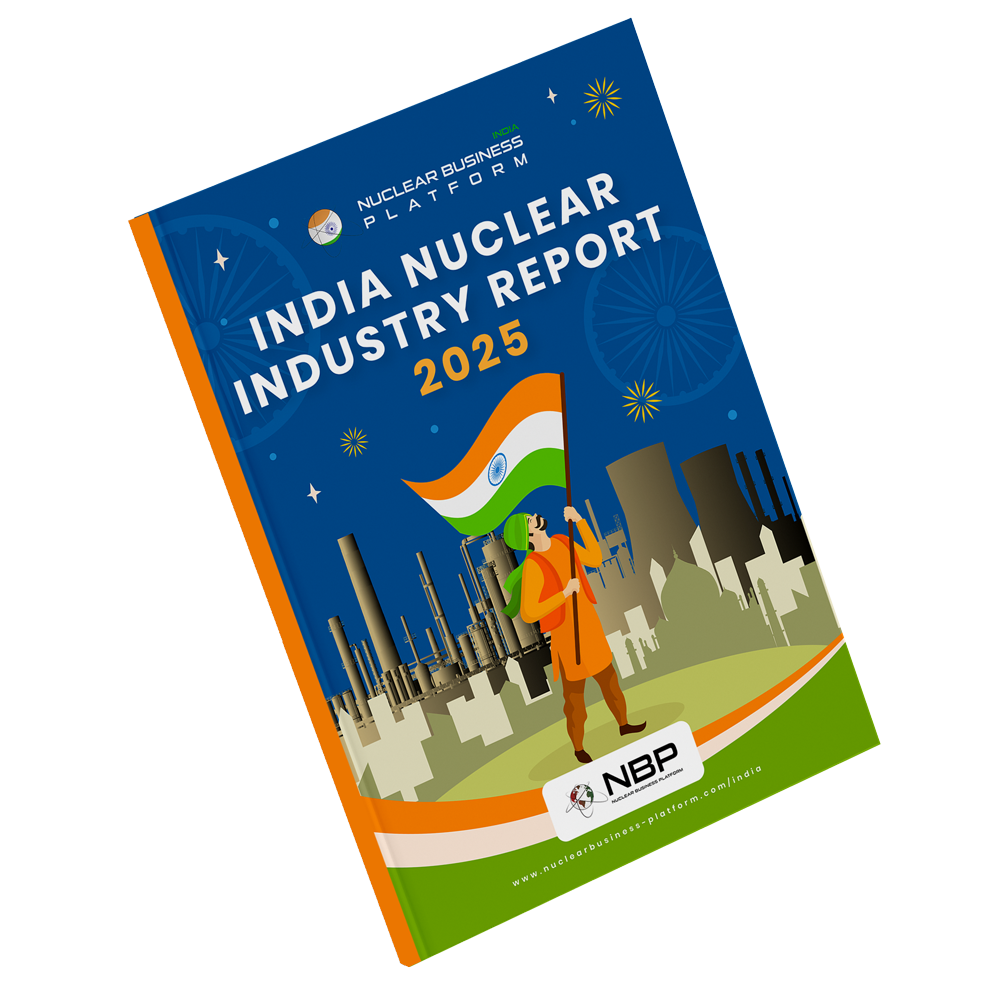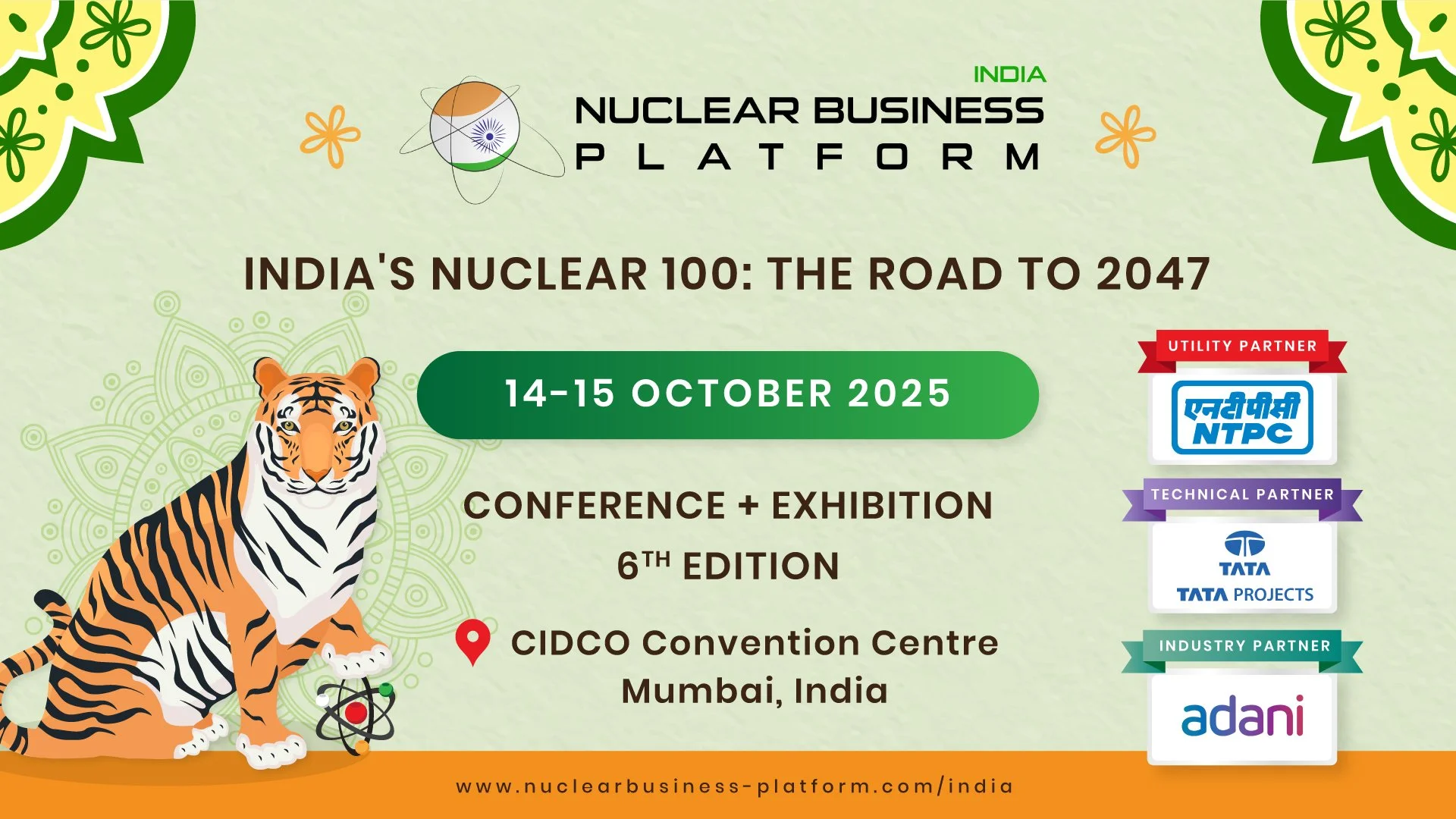Entering India’s Nuclear Energy Market: Key Considerations
Private sector entry into India’s nuclear energy market is no longer a distant possibility—it is rapidly becoming a strategic imperative. With legislative reforms underway and policy momentum building, India is preparing to welcome private participation into a sector historically reserved for state control. For companies seeking long-term, large-scale infrastructure opportunities, the timing could not be more critical. However, nuclear energy is not a conventional business domain—it demands a distinct approach rooted in technical discipline, regulatory clarity, and sustained public engagement. As leading Indian conglomerates begin to move, the question is no longer if private players should enter, but how prepared they are to do so responsibly and competitively. This article sets out the key considerations every serious private player must evaluate before stepping into India’s nuclear energy sector.
India's Nuclear Energy Landscape: Targets, Reforms, and Private Sector Interest
India has set a target of achieving 100 GW of nuclear power capacity by 2047, with an interim goal of 22 GW by 2032. Currently, 25 nuclear reactors are in operation, providing a total installed capacity of 8,880 MW. This expansion is critical to meeting the country’s rising energy demand and long-term decarbonization goals.
In a significant policy shift, the government is reviewing key legislative reforms, including proposed amendments to the Atomic Energy Act of 1962 and the Civil Liability for Nuclear Damage Act of 2010. These reforms aim to enable regulated private sector participation in nuclear power generation and align India's liability framework with international norms. The draft amendments are currently under review by expert committees comprising representatives from the Department of Atomic Energy (DAE), Atomic Energy Regulatory Board (AERB), NITI Aayog, and the Ministry of Law and Justice.
This evolving policy environment has sparked serious interest from major Indian conglomerates such as Jindal Nuclear Power, Adani Group, Tata Power, Vedanta, and Reliance Industries, signaling a new era of private engagement in a domain traditionally dominated by public entities. As this transition unfolds, private sector stakeholders must carefully evaluate a range of technical, regulatory, financial, and social considerations to ensure viable and responsible participation in India’s nuclear journey.
Key Considerations for Private Players Entering India's Nuclear Energy Sector
For private players eyeing India's burgeoning nuclear energy sector, a strategic and nuanced approach is paramount. Here are ten critical considerations to keep in mind:
Deep Dive into Evolving Legal and Regulatory Frameworks: The ongoing amendments to the Atomic Energy Act, 1962, and the Civil Liability for Nuclear Damage Act, 2010, are foundational. Private players must meticulously track the final contours of these laws, particularly regarding liability caps for vendors and operators (potentially to the original contract value with a statute of limitations), and the precise scope of private equity participation (minority equity). Understanding the stringent qualifying criteria—including financial strength, technical expertise, and a proven track record in large-scale projects—is non-negotiable for successful entry.
Strategic Financial Planning for Capital-Intensive Projects: Nuclear projects demand substantial upfront capital and are characterized by long gestation periods, with operational lifespans often exceeding six decades. These high capital requirements can significantly impact project viability, particularly under unfavorable financing terms. Private players must secure “patient capital” and adopt innovative financing structures tailored to the long-term nature of nuclear assets. To de-risk investments, the government is recommending mechanisms such as viability gap funding (VGF) and sovereign guarantees. Structuring projects with an optimal mix of debt and equity, while leveraging these support frameworks, will be essential for attracting private capital and ensuring bankability.
Embrace Public-Private Partnerships (PPPs) and Joint Ventures (JVs): The government explicitly promotes PPPs and JVs, where private players provide capital, land, and cooling water, while NPCIL handles design, quality assurance, and operation. The successful NPCIL-NTPC JV, Anushakti Vidhyut Nigam Ltd. (ASHVINI), with NPCIL holding 51% and NTPC Ltd. 49%, serves as a blueprint for future collaborations, including with private Indian firms and foreign partners. Another model is the captive power approach for Bharat Small Reactors (BSRs), where private users are responsible for the entire Capital Expenditure (CapEx) and Operating Expenditure (OpEx), including maintenance and decommissioning costs, and pay annual fees for plant operation and INR 0.60 per kWh of electricity generated, escalating by INR 0.01 per kWh annually.
Focus on Small Modular Reactors (SMRs) and Bharat Small Reactors (BSRs): India's Union Budget 2025-26 launched a Nuclear Energy Mission with a significant allocation of Rs.20,000 crore (approximately $2.4 billion) for SMR research and development (R&D), aiming for at least five indigenously designed and operational SMRs by 2033. SMRs, with power capacities ranging from 30 to 300 MW per unit, are physically smaller and modular, allowing for factory assembly and transportation. BSRs are essentially 220 MW Pressurized Heavy Water Reactors (PHWRs) that are being upgraded to reduce land requirements, making them highly suitable for deployment near industries as captive power plants to aid in decarbonization efforts. The Bhabha Atomic Research Centre (BARC) and NPCIL are actively designing and developing Bharat Small Modular Reactors (BSMRs) of 200 MW capacity, with an estimated commissioning timeline of five to six years post-project sanction.
Prioritize Uncompromising Safety and Regulatory Compliance: The Atomic Energy Regulatory Board (AERB) is India's stringent nuclear safety regulator, embodying the nation's unwavering commitment to safety. Its mission is to ensure that the use of ionizing radiation and nuclear energy does not cause undue risk to health or the environment. Safety is ensured through a "Defence-in-Depth" philosophy at the design level and "As Low As Reasonably Achievable (ALARA)" at the operations level. AERB prescribes detailed effective individual dose limits for radiation workers (20 mSv/year averaged over five consecutive years, with a maximum of 30 mSv in any single year) and for members of the public (1 mSv/year at the site boundary during normal operations). Cybersecurity is also a critical focus, requiring protection from cyberattacks for sensitive digital assets and regular tests and assessments.
Proactive Public Engagement and Securing Social License to Operate: India’s nuclear expansion must be accompanied by strong public engagement, especially in light of past opposition at sites like Jaitapur, Kudankulam etc. Concerns around safety, radiation, waste, environment, and livelihoods highlight the need for transparent dialogue and trust-building. Demonstrating safe, well-designed operations is key to earning public confidence. Private players have a vital role in going beyond regulatory compliance—by actively engaging with communities, addressing concerns sincerely, and ensuring environmental care and fair compensation, they can help secure the social license to operate and enable smooth project development.
Invest in Domestic Manufacturing and Supply Chain Integration: Achieving 100 GW capacity necessitates installing over 4 GW of new nuclear power plants annually within 22 years, demanding a massive ramp-up in domestic manufacturing capabilities for reactor components. The government explicitly supports Public-Private Partnerships (PPPs) in nuclear component manufacturing, SMRs, and hydrogen production. Indian conglomerates like Larsen & Toubro (L&T) are already actively involved; in a significant development, the US Department of Energy last month cleared an American firm, Holtec International to design and build SMRs in India in collaboration with L&T, Tatas, and Holtec Asia. This creates opportunities for private firms to integrate into the nuclear supply chain, reducing import dependence and contributing to the "Make in India" initiative.
Strategic Human Capital Development and Skill Building: The nuclear sector requires a highly specialized and skilled workforce across design, engineering, construction, operation, maintenance, and waste management. The planned rapid expansion will create an unprecedented demand for such human capital. Private players should invest significantly in training programs, attract top talent, and potentially collaborate with academic institutions, vocational training centers, and public sector entities like NPCIL and BARC for comprehensive skill development and knowledge transfer.
Understand and Integrate with India's Closed Fuel Cycle and Waste Management Strategy: India's nuclear power program is founded on a long-term vision of energy independence and strategic autonomy, articulated through its unique three-stage nuclear power program, leveraging substantial uranium and vast thorium reserves. This strategy includes a closed fuel cycle, aiming to minimize waste volumes and maximize resource utilization by reprocessing spent fuel to recover valuable fissile materials for reuse. The first stage involves natural uranium-fueled Pressurized Heavy Water Reactors (PHWRs), the second stage uses plutonium-239 in Fast Breeder Reactors (FBRs), and the third stage aims for full exploitation of thorium in uranium-233 fueled breeder reactors. Private players must align with this strategy and be prepared to contribute to long-term, scientifically sound solutions for radioactive waste management.
Taken together, India's nuclear energy sector is undergoing a profound transformation, presenting an unparalleled opportunity for private players. The nation’s capacity targets (100 GW by 2047), coupled with a clear policy shift towards private participation and ongoing legislative reforms, signal a new era of growth and innovation. Success in this sensitive and capital-intensive domain will hinge on a deep understanding of the evolving regulatory landscape, robust financial strategies, a commitment to advanced technologies like SMRs, and an unwavering dedication to safety, security, and public trust. A key milestone in this journey will be the 6th India Nuclear Business Platform (INBP) 2025, scheduled for 14–15 October 2025 in Mumbai. This premier forum will bring together policymakers, global stakeholders, and industry leaders to define the next phase of India’s nuclear trajectory. By strategically navigating these considerations, private players can not only contribute significantly to India's energy security but also establish themselves as key stakeholders in shaping a sustainable and self-reliant nuclear future for the nation.



